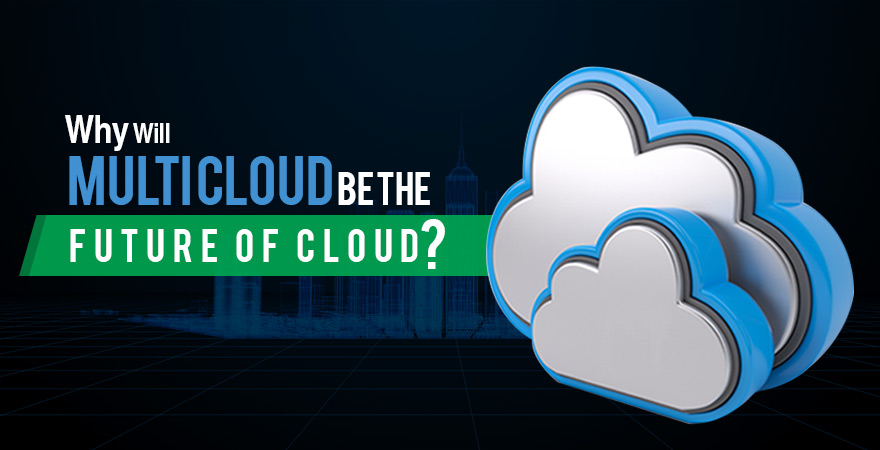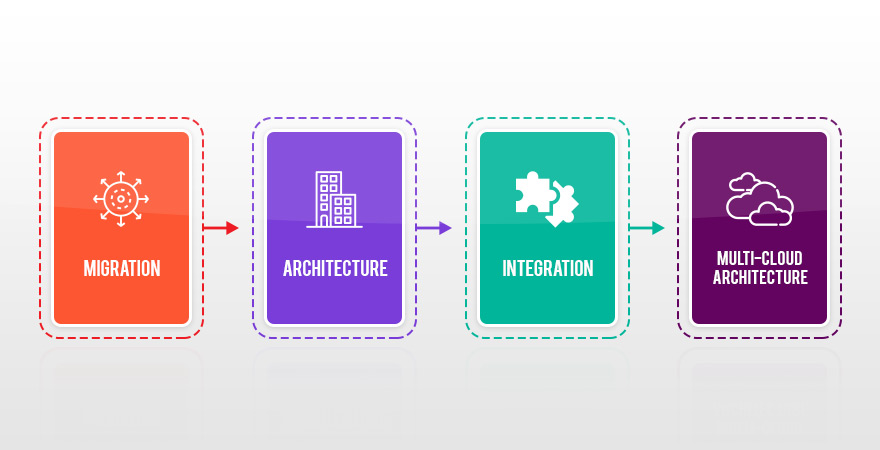Multi Cloud Platform
The enterprise world is rapidly moving away from Private and Hybrid Cloud infrastructures towards Multi Cloud Platforms. A multi cloud enables enterprises to have the “best of all worlds”, as the options are limitless in the case of a multi cloud deployment. Though complex to deploy, a multi cloud environment delivers unrivaled flexibility, efficiency and performance as compared to on-premise or hybrid cloud environments.
The Cloud Computing Industry has never looked back ever since its introduction. One of the major reasons behind this trend has been the constant evolution of this industry. In addition to evolving, the cloud industry has remained very dynamic with out of the box solutions coming up every now and then.

Before we delve into multi cloud and the reasons we think it’s here to stay, let’s cover some of the major challenges that cloud tenants endure in cloud based solutions.
Also Read:
- Hybrid Cloud Outlook for Year 2020
- Top 8 Hybrid Cloud Computing Expectations for 2020
- Why Multi Cloud Computing Is Better Than Hybrid Cloud Computing?

Migration
It is a well-established that there is often resistance to change. For an organization that handles workloads in the orthodox fashion, the cloud is something over whelming. Granted there would be few who would deny the benefits of cloud, but the exercise of migration tends to serve as an entry barrier.
At the very base of such apprehensions lie the fundamental concerns surrounding core business operations. Organizations tend to get very defensive when they feel the slightest amount of uncertainty developing around their business continuity paradigm.
Also Read: The Pros and Cons of Cloud Computing for Businesses
Architecture
With a decent choice of Cloud Service Providers (CSP) and a wide range of implementation architectures, most entities prospecting for a cloud solution tend to get lost in all the choice. Inadvertently, most solutions have also been designed in a way that you seldom get the optimal solution.
In most cases, it is always a sort of compromise over some key functionality and this tends to deter many prospecting organizations to postpone or shelve the idea altogether. Even in cases where you have locked in on a particular CSP, the choice of offerings is still wide enough to intimidate prospecting entities.
Integration
The most pronounced integration related challenges are faced by entities that opt in favor of a hybrid cloud architecture. In this deployment model, some of the business critical processes remain assigned to the on premise IT infrastructure.
Only the lower priority and simpler workloads are shifted to the cloud infrastructure. This creates integration and workload allocation bottlenecks, as a dual architecture performing in parallel gives rise to a unique set of complex problems.
Multi-Cloud Architecture
We can consider the multi cloud as an extension of the hybrid cloud infrastructure, but one that is much more complex. A multi cloud environment is characterized by one service coming from one CSP while another service being provided by some other CSP altogether.
In the early days of cloud computing, this seemed like an impossible undertaking but such has been the very nature of cloud computing industry. As is the case with most innovations, it was the cloud users that prompted CSPs to explore this seemingly impossible scenario.
Also Read:
- What is Virtualization and Types of Virtualization
- How to Achieve a Secure Cloud Going Into 2020
- 12 Ways Cloud Computing is Transforming Education
Just by visualizing a multi cloud architecture, the first thought that pops in our mind is how such a complex solution would function in the first place, let alone deliver optimal results. The other pertinent question was whether multi billion dollar CSPs would allow this industry altering initiative.
The answer to both the above questions is in the affirmative. Not only did multi cloud solutions become a reality and deliver high performance, but CSPs also had to gear up for this inevitable reality of the cloud industry. Welcome to the era of multi cloud architectures that has breathed fresh life in the saturating cloud landscape.
Why is Multi Cloud Here to Stay?
In today’s rapidly evolving tech landscape, the only thing that’s permanent is change. Still, the era of multi cloud is in its infancy and we should expect multi cloud architectures being implemented across many existing and new cloud tenants over the next few years.
Here are some of the reasons we think multi cloud will not only become more prevalent but also define the future of cloud computing industry over the upcoming years.
Low Complexity
When any organization moves over to the cloud, it is essentially outsourcing its network and architectural complexities to the CSP or CSPs in the case of multi cloud. For CSPs, this is not a matter of choice, rather a question of survival and future growth.
Duly considering this, CSPs have now become much more engaged and involved in resolving technical challenges and bottlenecks that are an inescapable part of any multi cloud architecture. CSPs are now working on the principle of something is better than nothing and its doing wonders for cloud tenants.
Now, CSPs are addressing compatibility issues very proactively and this is playing an instrumental role in making multi cloud deployments a reality. Previously, despite having the requisite skill and human capital, CSPs were reluctant to take this leap for obvious concerns around competitive edge but this has changed now.
Pick n Choose
A multi cloud environment has put cloud tenants in the driving seat where they can simply pick and choose the CSP on the basis of very specific offerings. Take the example of one CSP that offers highly competitive storage solutions in the cloud. Another CSP offers a very robust database management solution.
Prior to the proliferation of multi cloud, this was an either or scenario. If you wanted a cloud solution, you would either compromise on a compelling storage solution or the database option. The multi cloud landscape has changed it altogether.
Now, an entity prospecting for the cloud can grab a wish list and shop around all the CSPs with a good cloud footprint. Once the best CSP has been selected for each organizational workload, all the cloud tenant has to do is wait for these solutions to be seamlessly integrated by none other than CSPs themselves.
Another defining trend of the multi cloud landscape is that solution providers have now started to build their solutions that fully support multiple cloud platforms by default. Take the example of a machine learning solution that is compatible with almost all the major CSP infrastructures right from the design stage.
Expand Rapidly
The cloud in general and multi cloud in particular have enabled organizations to afford unprecedented operational flexibility. Now, expanding into new markets or even geographies has become a breeze. All an entity has to do is choose a CSP with a decent cloud footprint and rest will be taken care of.
The same level of flexibility transitions into mergers and acquisitions that are equally daunting for all the parties involved. A multi cloud environment will enable a smooth transition of business critical workloads and ensure business continuity in such complex scenarios.
Conclusion
Multi cloud has breathed a fresh lease of life into the cloud computing industry. Now, cloud based solutions have become irresistibly attractive for even the skeptics of such architectures. Nonetheless, the importance of choosing the right CSP for the right workload still lies largely with cloud users.


